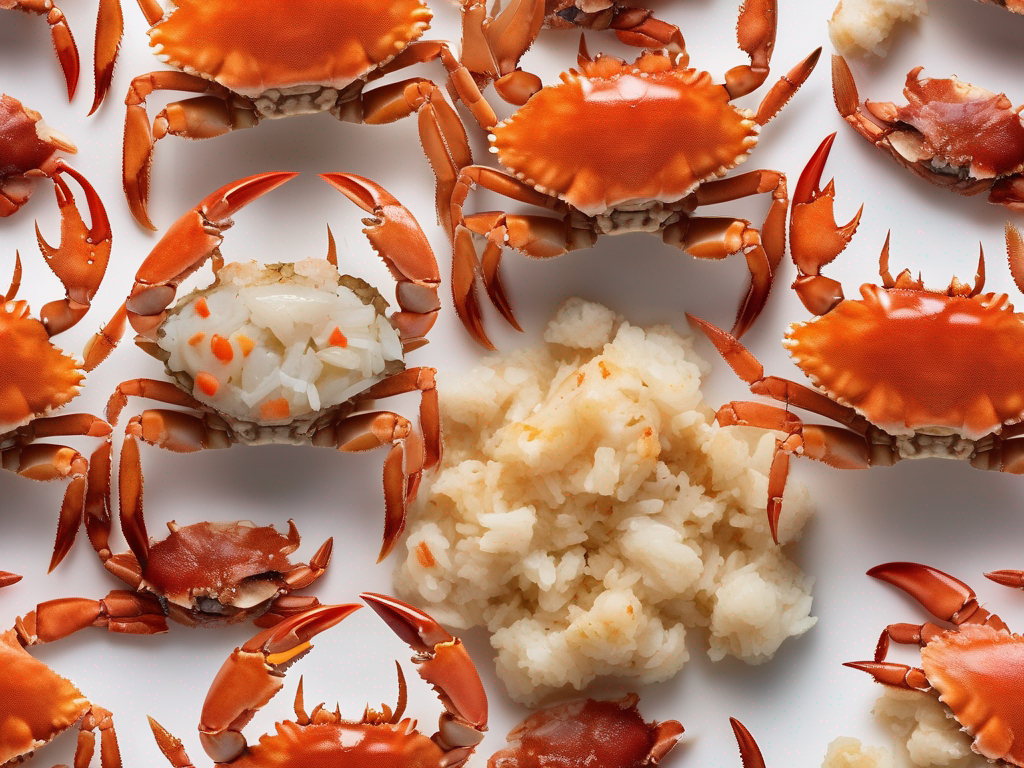
Expert Tips for Extending the Shelf Life of Crab Meat Cooked Leftovers
Get Your Free Food Safety Cheat Sheet
30 most common foods with instant answers. Print it and stick it on your fridge—completely free!
Expert Tips for Extending the Shelf Life of Crab Meat Cooked Leftovers
Crab meat is a delicate and delicious seafood that many people enjoy. Whether you've cooked a batch of crab meat at home or ordered it from a restaurant, it's essential to know how to properly store and extend the shelf life of any leftovers. In this blog post, we'll explore expert tips for maximizing the freshness and safety of crab meat cooked leftovers. (Crab meat cooked leftovers)
Understanding Crab Meat Shelf Life
Before diving into storage tips, it's crucial to understand the typical shelf life of cooked crab meat leftovers. Properly stored, cooked crab meat can last in the refrigerator for about 3-4 days. However, if you want to extend its shelf life further, you can opt for freezing, which can keep cooked crab meat safe to eat for up to 2-3 months.
Signs of Spoiled Crab Meat
It's essential to be able to identify signs of spoiled crab meat to avoid foodborne illnesses. Here are some indicators that your cooked crab meat may have gone bad:
- Foul or ammonia-like odor
- Slimy texture
- Discoloration or unusual dark spots
- Mold or unusual growth
- Off taste or flavor
If you notice any of these signs, it's best to discard the crab meat to prevent food poisoning.
Expert Tips for Extending Shelf Life
1. Proper Storage Techniques
Proper storage is key to extending the shelf life of cooked crab meat leftovers. Follow these tips for optimal storage:
-
Refrigeration: Store cooked crab meat in an airtight container or resealable bag. Place it in the coldest part of the refrigerator (usually the back of the bottom shelf) to maintain freshness.
-
Freezing: If you want to store crab meat for longer periods, freezing is a great option. Wrap the crab meat tightly in plastic wrap or aluminum foil before placing it in a freezer-safe container.
2. Labeling and Date
To keep track of when the crab meat was cooked and stored, always label the container with the date. This practice helps you identify how long the leftovers have been in the fridge or freezer, ensuring you consume them within a safe timeframe.
3. Avoid Cross-Contamination
When handling cooked crab meat, always use separate utensils and cutting boards to prevent cross-contamination with other foods. Wash your hands thoroughly after handling raw or cooked seafood to maintain food safety.
4. Reheating Precautions
When reheating cooked crab meat leftovers, ensure it reaches an internal temperature of 165°F (74°C) to kill any potential bacteria. Use a food thermometer to check the temperature and avoid overcooking, which can affect the texture and taste of the crab meat.
Conclusion
Proper storage and handling are essential for maintaining the freshness and safety of cooked crab meat leftovers. By following expert tips such as proper refrigeration, labeling, avoiding cross-contamination, and reheating precautions, you can enjoy your crab meat dishes without compromising on taste or safety. Remember to always trust your senses and discard any crab meat that shows signs of spoilage. With these tips in mind, you can savor delicious crab meat dishes with peace of mind. [Click here](/food/crab meat cooked leftovers) for delicious crab meat recipes! (Crab meat cooked leftovers)
Related Posts
Here are some other articles you might find helpful:
Authoritative Food Safety References
These agencies and university labs inform every tip and health precaution we publish.
USDA FoodKeeper – Cold Storage Guidelines
Official refrigerator, freezer, and pantry timelines maintained by the U.S. Department of Agriculture.
Visit USDA FoodKeeperFDA Produce Safety Rule & Grower Guidance
Field-to-fridge handling practices that prevent contamination of fruits, vegetables, and leafy greens.
Visit FDA Produce SafetyCDC Foodborne Illness Prevention Hub
Surveillance-backed guidance on pathogens, symptoms, and steps to reduce foodborne illness risk.
Visit CDC Food SafetyUC Davis Postharvest Technology Center
University research detailing optimal storage atmospheres for produce after harvest.
Visit UC Davis PostharvestPenn State Extension – Home Food Preservation & Safety
Peer-reviewed extension bulletins on safe canning, chilling, and reheating practices.
Visit Penn State ExtensionGet Your Free Food Safety Cheat Sheet
30 most common foods with instant answers. Print it and stick it on your fridge—completely free! Want more? Upgrade to the complete guide with 70+ foods.
Scan your food directly and get instant safety info using our AI-powered camera feature.